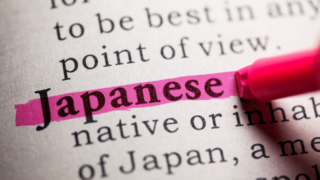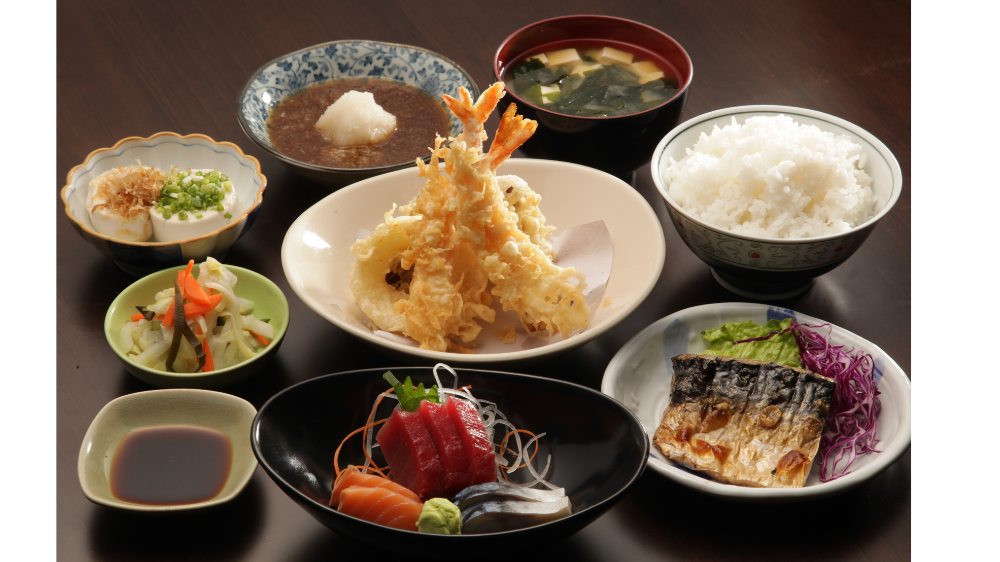
Dining manners reflect the deeply ingrained values and culture of a country. In this article, we will cover the essential dining etiquette you should be mindful of when dining at Japanese restaurants or enjoying Japanese cuisine. By following these manners, you can fully appreciate Washoku, which is recognized as a UNESCO Intangible Cultural Heritage.
- How to Enjoy Delicious Japanese Food?
- 1. Use the Oshibori Only for Hands
- 2. Say “Itadakimasu” and “Gochisousama” Before and After Meals
- 3. Use Chopsticks Properly
- 4. Hold Your Rice Bowl
- 5. Do Not Rest Your Elbows on the Table
- 6. It’s Okay to Make Noise When Drinking or Eating Noodles
- 7. Try to Finish Your Meal
How to Enjoy Delicious Japanese Food?
 Japanese food
Japanese foodWhen you visit Japan, indulging in the local cuisine is a must. From sushi and yakiniku (grilled meat) to ramen and set meals that recreate homemade dishes, Japan offers a wide variety of unique flavors. To enhance your dining experience, it’s important to pay attention to dining manners. While certain behaviors might be acceptable in your home country, they could be considered taboo in Japan.
Here, we will introduce the essential dining manners you should observe when eating at Japanese restaurants. Be sure to check these tips to avoid any awkward situations.
1. Use the Oshibori Only for Hands
 a hand towel provided before a meal
a hand towel provided before a mealMost Japanese restaurants will provide an oshibori (a wet towel) upon entry. These can be disposable paper towels or reusable cloth towels, depending on the establishment. The primary purpose of the oshibori is to clean your hands. Avoid using it to wipe your face, mouth, or table, especially if it’s a cloth towel. It’s important to maintain cleanliness, as cloth towels are often reused. Also, avoid leaving the oshibori spread out; fold it neatly after use to show consideration.
2. Say “Itadakimasu” and “Gochisousama” Before and After Meals
 Japanese rituals before a meal
Japanese rituals before a mealIn Japan, it is customary to say “itadakimasu” before starting a meal and “gochisousama” after finishing. These phrases express gratitude and have two meanings.
First, they show appreciation to everyone involved in the meal, from the farmers who grew the food to the chefs who prepared it.
Second, they convey thanks to the food itself. Eating involves taking the lives of plants and animals, and these phrases acknowledge and show respect for that sacrifice. This reflects the Japanese cultural view that eating is an act of gratitude.
3. Use Chopsticks Properly
 tools used when eating Japanese food
tools used when eating Japanese foodChopsticks are the primary utensils used in Japanese dining, and there are many rules regarding their use. Start with holding them correctly and avoid placing them vertically in food, as this resembles funeral rituals. It’s also important not to stab food with chopsticks.
Can You Ask for a Fork?
If you are not comfortable using chopsticks, feel free to ask the staff if they have forks available. Many restaurants provide forks for foreign guests to ensure they have a pleasant dining experience.
4. Hold Your Rice Bowl
 the custom of holding small bowls while eating
the custom of holding small bowls while eatingWhen eating a traditional Japanese meal, it’s customary to hold the rice bowl or miso soup bowl while eating. This enhances the dining experience by allowing you to better appreciate the aroma and temperature of the food. Lightweight bowls that can be held in one hand are generally held while eating, whereas larger bowls or plates can be left on the table with one hand supporting them.
5. Do Not Rest Your Elbows on the Table
Resting your elbows on the table while eating is considered poor etiquette and can make you look slouched. Instead, keep your elbows off the table and rest your non-dominant hand lightly on the table or on the dish you are eating from. Maintaining good posture not only looks better but is also better for digestion.
6. It’s Okay to Make Noise When Drinking or Eating Noodles
 Ramen
RamenIn Japan, making noise while drinking miso soup or eating noodles like ramen and udon is often seen as a sign that you are enjoying the meal. This practice is especially common with hot liquids and is considered polite. However, not all noises are acceptable—be mindful of the sound you make when placing dishes down or chewing. If you are unsure whether making noise is appropriate, it’s safer to eat quietly.
7. Try to Finish Your Meal
In Japan, it is considered polite to finish all the food on your plate. This shows respect for the efforts of those who prepared the meal and for the food itself. If you have allergies or dietary restrictions, inform the staff when ordering so they can accommodate your needs. If you cannot finish your meal, it’s still important to express your appreciation to the restaurant staff by saying “It was delicious” before leaving.
By following these manners, you can ensure a pleasant and respectful dining experience in Japan. Enjoy the rich flavors and unique dishes that Japanese cuisine has to offer while adhering to these cultural norms.




